During the summer months, snakebites are more often reported across Britain. But are our native reptiles really more volatile when temperatures warm up?
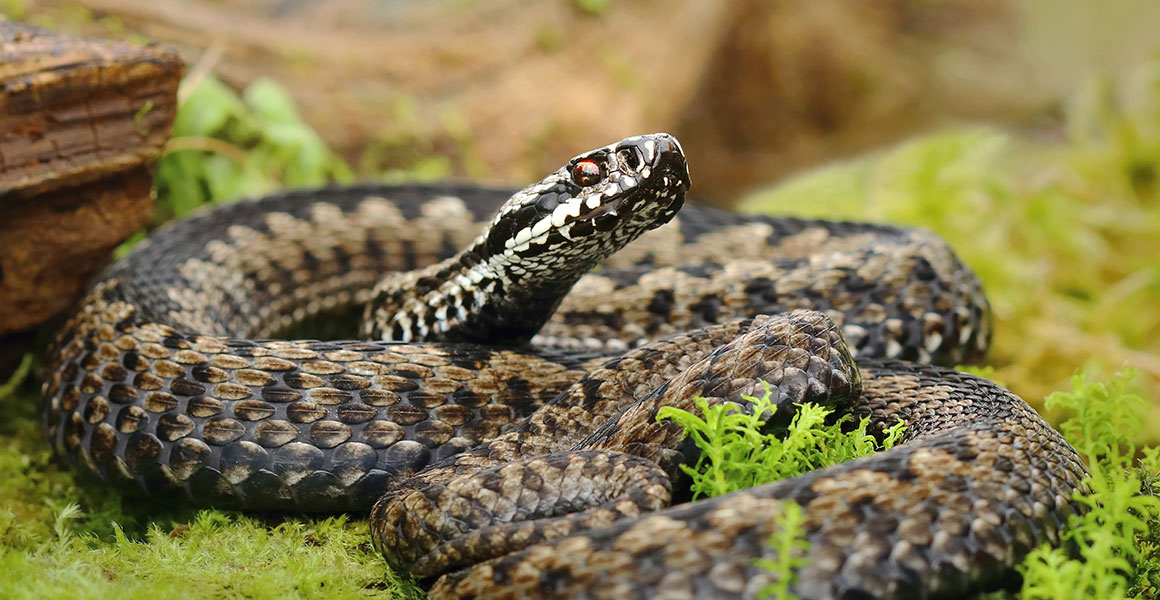
The adder, Vipera berus, is the UK’s only venomous snake. © Miroslav Hlavko/ Shutterstock
There are very few dangerous animals living in and around Britain. Although the sight of a snake might be terrifying to some, the species found in the wild in the UK are rarely cause for concern.
Get to know the snake species you might spot out and about in Britain and how to work out what you’ve seen.
Types of snakes in the UK and how to identify them
There are four species of snake living in the wild in Britain. Three are native and one is a non-native, introduced species.
Common European adder
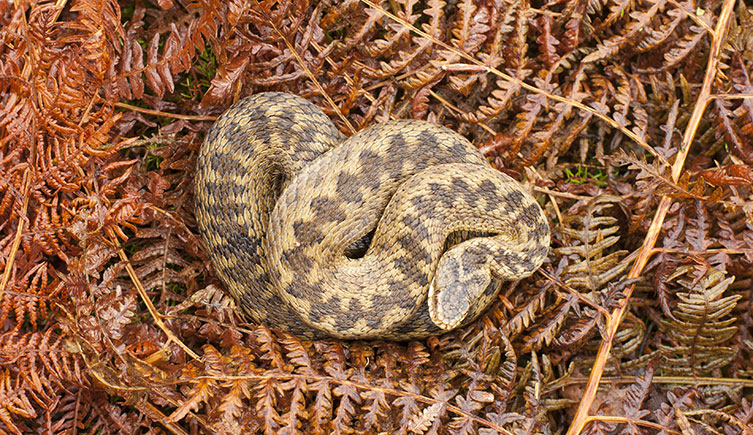
Adders have a distinctive zigzag pattern running down the full length of their backs. © Jamie Hall/ Shutterstock
The common European adder, also known as the common European viper, is Britain’s only venomous snake. In the UK, it’s often just referred to as the adder and is found across England, Scotland and Wales. They’re mainly found in heathlands, commons and woodland.
Adders have stocky bodies, reaching a maximum length of approximately one metre. They vary in colour: males are usually grey and female adders are often reddish, although there are some that are entirely black, which is what’s known as a melanistic form.
They have a distinctive, darker zigzag pattern down the middle of their backs and a clear V or X marking on the top of the head. These snakes have a slit pupil - similar to a cat’s - instead of a round one. They also have keeled scales - rather than being smooth, they have a raised ridge down their centre.
Barred grass snakes
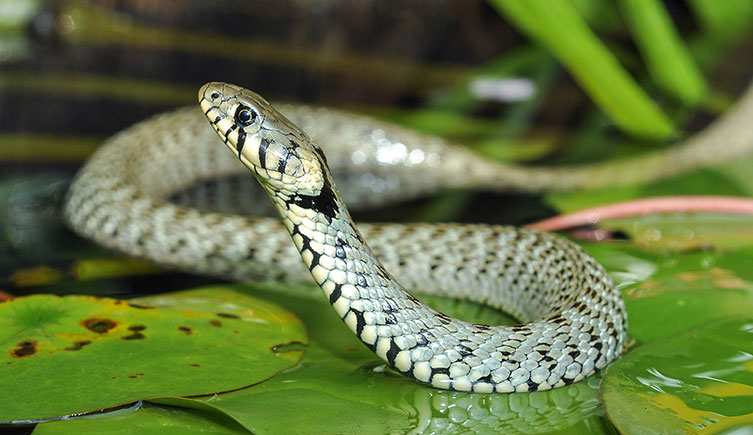
Grass snakes are the largest snakes native to Britain. © Dr.Pixel/ Shutterstock
Barred grass snakes, Natrix helvetica, are the largest snakes native to Britain. They generally reach approximately 1.3 metres long.
These snakes are green with dark bars and they have a black and cream or white collar at the base of the head. Their eyes have a round pupil.
Grass snakes are proficient swimmers and feed mostly on amphibians. You will find these snakes across England and Wales, often in or near water, but also in grasslands and gardens.
Smooth snakes
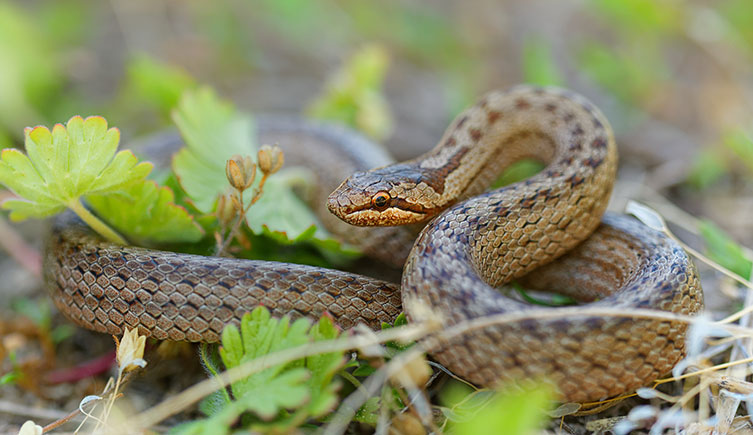
The smooth snake has polished scales and a round pupil with a golden iris. It has less distinctive markings on its back than the adder. © Martin Pelanek/ Shutterstock
Smooth snakes, Coronella austriaca, are very rarely encountered. In the UK they’re only found in the heathlands of Dorset, Surrey and Hampshire.
These snakes are up to about 70 centimetres long. The colour of their scales makes them look a bit like the adder. But you can tell these two apart, as the pattern on the smooth snake’s back is not as distinctly zigzagged as the adder's. Additionally, smooth snakes have polished - unkeeled - scales and a round pupil with a golden iris.
Smooth snakes are also found across continental Europe and into Asia, from northern Spain to Iran.
Aesculapian snakes
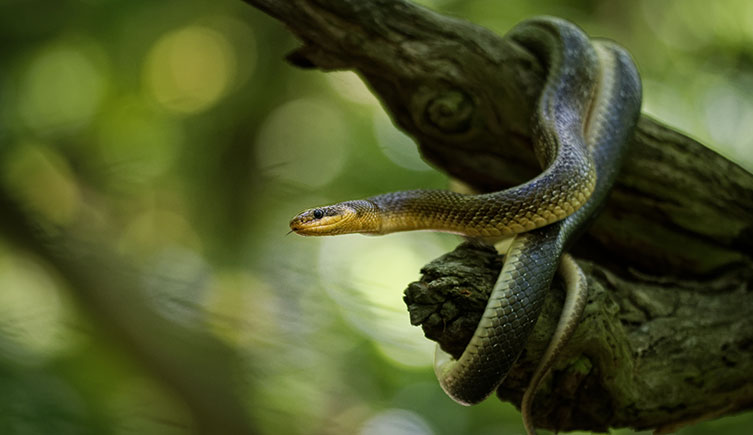
Aesculapian snakes are not native to Britain, but they are found in the wild here. © Martin Pelanek/ Shutterstock
Aesculapian snakes, Zamenis longissimus, are native to continental Europe, found from France to south-west Ukraine. They’re one of Europe’s largest snakes, able to grow to over two metres long, though most are between 1.1 and 1.6 metres long.
These snakes are not native to Britain but have been living in the wild here since the 1970s. There are now three known populations - in North Wales, Bridgend and in the Camden area of London, mostly found along the banks of Regents Canal.
Aesculapian snakes are non-venomous and feed on rodents. Their colour varies from olive-yellow to almost black on the back, with a pale belly.
Which British snakes are dangerous?
The adder is the only venomous snake living in the wild in Britain. The bites from some venomous snake can cause serious damage, but there’s little reason to fear the adders slithering around Britain.
Patrick Campbell, our Senior Curator of Reptiles, says, ‘Generally speaking with the adder, you're not going to die from a bite.’
‘The bites tend to occur on the feet and ankles because people are exploring woodlands or heathland habitats and disturb them whilst walking. It’s a defence mechanism - they’re not going to come out and attack humans just for the sake of it.’

Adders have a distinctive V or X marking on the top of their head © taviphoto/ Shutterstock
‘There have been a few incidents over the years, but for those who are in good health, you’re not going to die from a bite. It will hurt and swell for a few days and you may have feelings of nausea and dizziness. Some who may be less fortunate may suffer an allergic reaction, but it generally isn't going to kill you.’
‘Children, the infirm and the elderly are most at risk.’
Fatalities from adder bites are exceptionally rare. The last in Britain occurred in 1975, when a five-year-old was bitten on the ankle in Scotland. Between 1950 and 1972 there was only one death caused by an adder bite across England and Wales.
Bees and wasps are more dangerous, causing 61 deaths over the same period.
For those who see a snake in the wild in Britain, Patrick says, ‘The best advice would be: don’t aggravate it. It’s safe to observe them respectfully from a distance, but just don't go picking them up and they will leave you alone.’
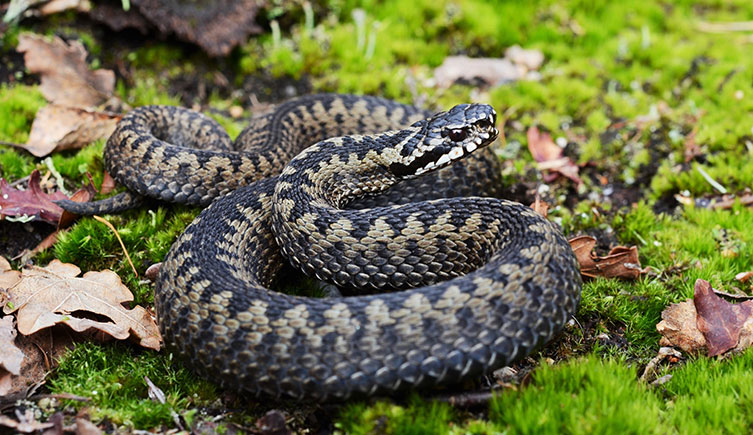
Adders have a distinctive zigzag pattern running down the full length of their back. © Holm94/ Shutterstock
‘There’s nothing much to worry about,’ he continues. ‘An adder won't chase you - there are stories, perhaps fanciful, of black mambas in Africa pursuing people, but the adder is not like this. It is not an aggressive snake, but quite shy and reclusive.’
‘However, in any case of suspected adder bite, immediate medical attention is needed, primarily to avoid infection around the wound. Antivenom is rarely needed but should be considered in severe cases.’
If you’re bitten by a snake
Seek immediate medical attention and try to remember a description of the snake to help medical professionals identify the species - but don’t try and catch it.
Visit the NHS website for native and exotic snakebite advice.
Where to find British snakes
British snakes are usually solitary, shy animals that prefer to flee than fight. More bites occur in the summer as British snakes hibernate through winter, when people are also less active and wearing heavier clothing and footwear.
Patrick Campbell explains where snakes go in winter. Video with audio description (2 minutes 13 seconds).
Snakes regulate their body temperature by sunning or retreating to cooler areas. They need to be warm in order to be active.
‘You often have to upturn logs and discarded metallic objects, which are good conductors of heat, to find them,’ explains Patrick.
‘They tend to favour hiding under things for safety, to keep warm or to escape the heat - unless they’re out basking directly in the Sun. But if you find them, they’ll often slither away rapidly and are likely to strike out only if provoked or picked up.’
Reptile expert Dr Jeff Streicher shows us how to spot adders in London. Video with audio description (7 minutes 20 seconds)
It is safe to observe British snakes from a distance, but they should be left undisturbed.
What other reptiles are found in Britain?
Britain is home to three more native reptile species.
Slow worms
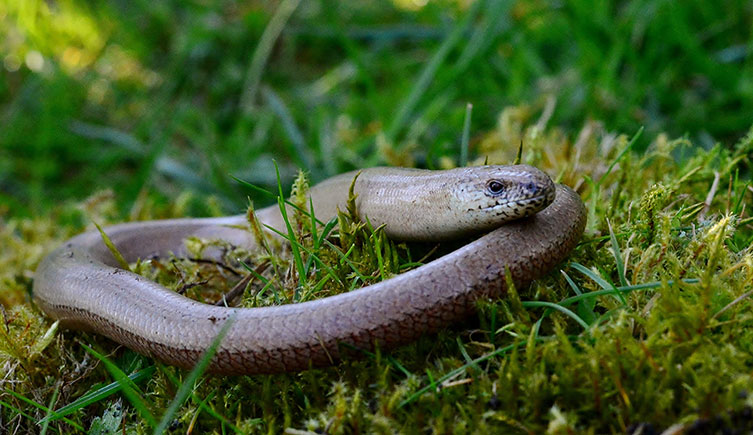
Slow worms are the only legless lizards native to Britain. © Becky Stares/ Shutterstock
Slow worms, Anguis fragilis, are often mistaken for snakes but are actually a type of legless lizard.
The quickest way to tell a snake from a slow worm is to see whether the animal blinks. Lizards have eyelids, snakes don’t.
Slow worms vary in colour from grey to bronze, and they can be up to 50 centimetres long.
Patrick says, ‘In my experience, slow worms tend to be far less elusive than snakes in the wild. They are often found in gardens - I found a dead one in my own back garden recently. They are more often confused with worms than with snakes because they don’t have large, imposing scales which overlap each other. They’re smooth to the touch, and most tend to be quite small compared to the snakes found here.’
UK lizards
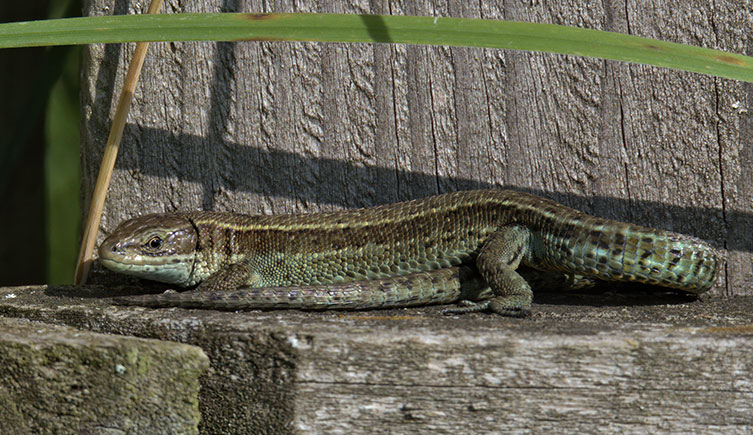
A common lizard basking in the Sun. © Stephen Ellis35/ Shutterstock
Britain is home to two lizard species: the sand lizard, Lacerta agilis, and the common lizard, Zootoca vivipara.
Apart from a few islands, the common lizard is found across the UK and it’s the only reptile native to Ireland. You may spot them basking in the Sun in a variety of habitats, including grasslands, moorlands and woodlands.
Sand lizards are seen less frequently. In fact, they’re one of the rarest reptiles in Britain. Like the common lizard, they bask in the Sun, but you’ll only really see them on heathland and sand dunes in a few isolated locations. While these lizards are sandy-brown for most of the year, the males are more easily spotted in the breeding season when their sides turn bright green.
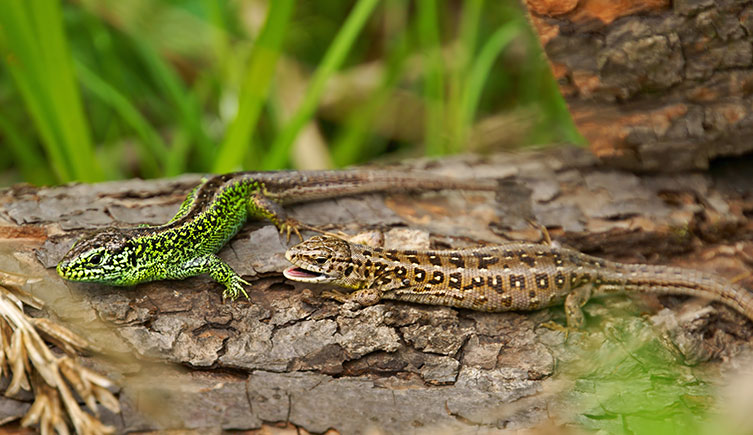
A male and female sand lizard during the breeding season. © Mirek Kijewski/ Shutterstock
Fascinated by snakes?
The biggest snake species in Britain can be over a metre long, but snakes can get much larger than that.
Discover some of the biggest reptiles slithering about on our planet!

British wildlife
Find out about the plants and animals that make the UK home.

Do your bit for nature
Biodiversity is connected to almost every aspect of our lives, but it needs our help. Small actions can make a big difference.
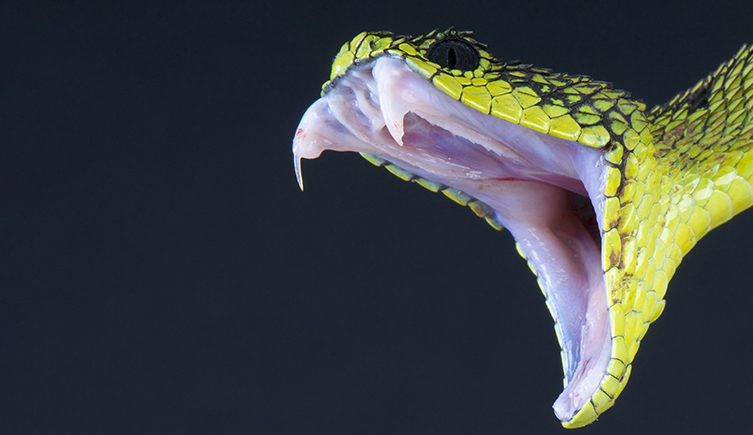
Ssss-orry to interrupt...
But you seem like a savvy serpent! Did you know we have an on-demand, online Snakes course available?
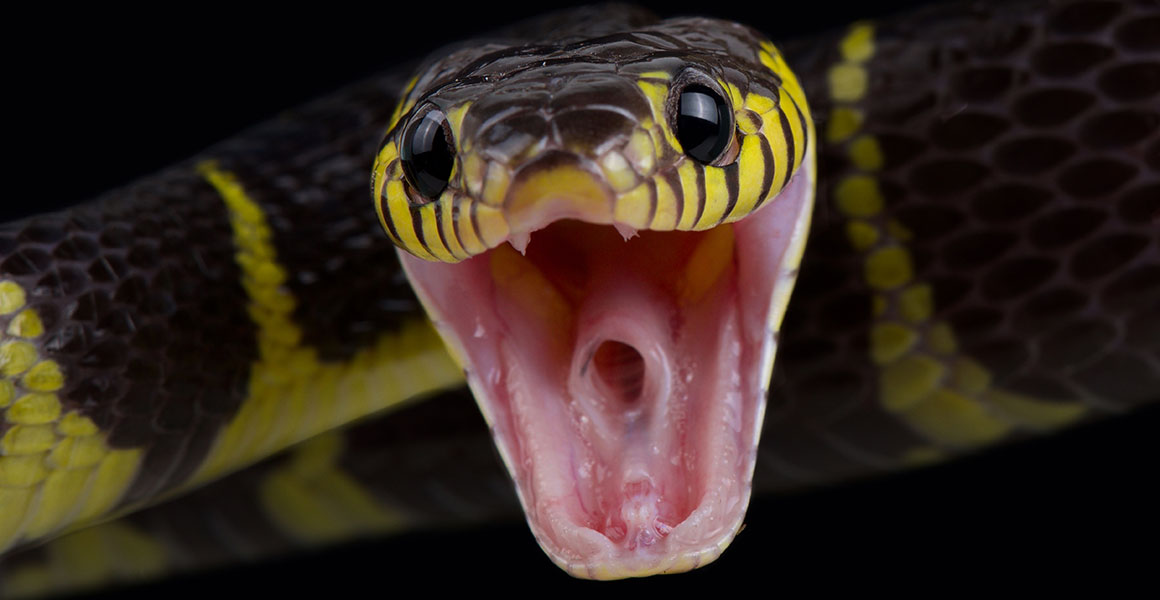
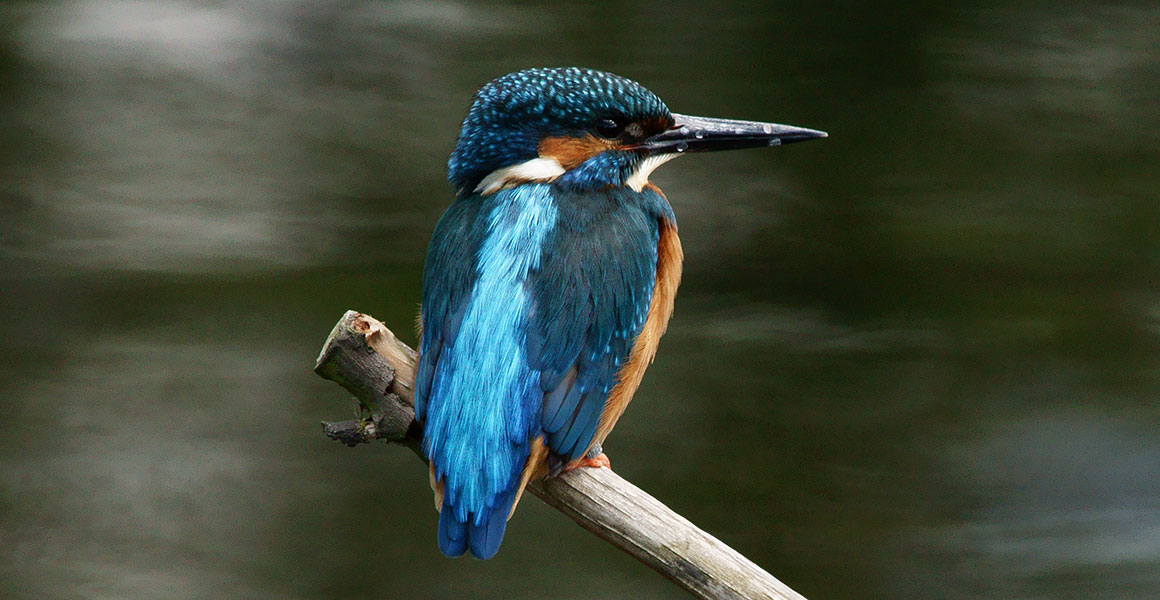

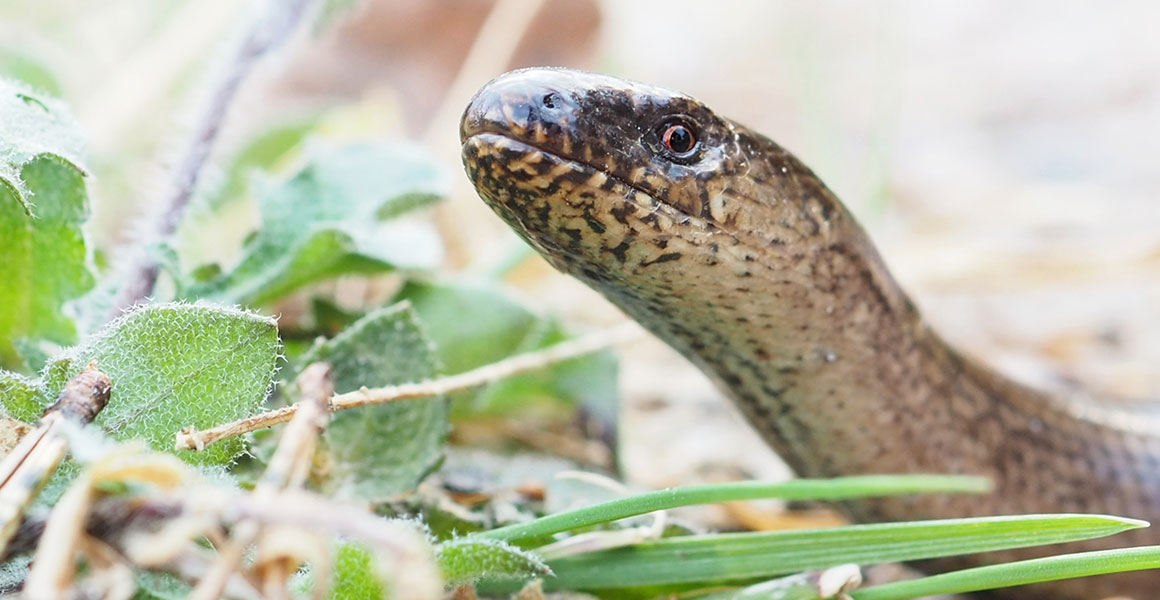
Don't miss a thing
Receive email updates about our news, science, exhibitions, events, products, services and fundraising activities. We may occasionally include third-party content from our corporate partners and other museums. We will not share your personal details with these third parties. You must be over the age of 13. Privacy notice.
Follow us on social media